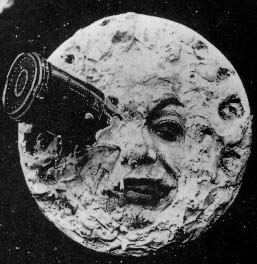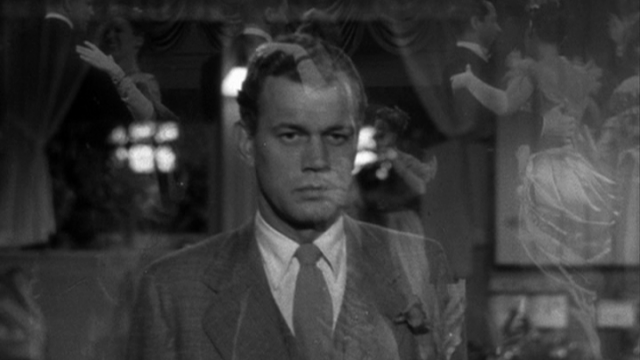With the late and lamentable exit of The Dissolve from the internet’s too-vast information superhighway, there is a serious problem in film discussion and writing.
Namely, that few know how to do it.
The problem is that too much of the web is now devoted to complacent, anti-intellectual sites (which will go unnamed) that don’t seek to engage, challenge, or educate, but merely to pacify. These sites bank off of readers’ ignorance, and hope to keep them ignorant in order to continue serving the drivel they spew out.
What made The Dissolve so wonderful (and apparently, so unsustainable) was that it was run by people who understood film as an art, and who did not just churn out listicles about “25 Actors Who Could Be the Next Spider-Man” or “50 Biggest Plot Holes of The Dark Knight” but actually sought to make intellectually and emotionally enriching pieces about the medium that billions of people partake in every day.
The passing of The Dissolve may lead some to lay down their copies of Hitchcock/Truffaut and give up hope.
Well, not me.
I’m staying here. And I’m not just gonna give over to the CinemaBlends of the world (okay, that one won’t go unnamed). And if I’m gonna make a list, it’s gonna be a list that educates or engages or elevates and doesn’t pacify. Let’s see how I do.

If we’ve seen a film in the past 100 years, we’ve seen a dissolve. It’s one of the most basic and distinctive of cinematic techniques, pioneered (along with many other techniques) by filmmaker Georges Méliès around the turn of the 20th century. Dissolves can be used for a number of reasons, but I think the most powerful aspect of a dissolve is its ability to express time. What a dissolve does is show time as both brief and long in the same instance — something that is perhaps unique to film as a medium. Dissolves take a moment and “bleed” it into another moment, which gives equal weight to both moments, and takes away our ability to easily distinguished past, present, and future. This can be the most effective beguiling thing about life, honestly; the way an individual can be 18 and young and full of promise one minute, and then be 36 and tired and regretful in what feels like the next but cannot be the next. This is a sensation that is all-too-common in life yet rare in other art forms, a sensation given a voice by the craft of filmmaking.
My favorite illustration of this is the ending of Francis Ford Coppola’s The Godfather Part II, which can be seen below. SPOILERS FOLLOW, obviously.
What is impressive here is that Coppola is able to compress three separate time periods — the birthday party/Pearl Harbor attack in 1941, the train ride in Sicily in the early 1920s, and the very last moments with Michael Corleone alone in about 1960 — into a single whole that takes advantage of not just one, but two memorable dissolves, which make it ambiguous to whether what we’re seeing is an omniscient, third-person style POV, or the perhaps the memories of Michael Corleone in his final scene, or something else entirely. The Godfather trilogy is full of such beautiful dissolves, befitting its melancholic, autumnal feel, reminiscent of one season turning subtly into another.
But dissolves are more versatile than just that. One of the best champions of dissolves in the annals of cinema was legendary German director F.W. Murnau, of Nosferatu fame. I could talk about just about any of his films here, but I want to highlight his 1927 masterpiece Sunrise: A Song of Two Humans, the director’s first American film, and the only film in history to win an Academy Award for Best Unique and Artistic Production at the very first Oscars, before Hollywood decided that they didn’t give a damn about awarding Unique and Artistic productions.
Sunrise is the story of a married couple from the country, whose domestic bliss is threatened when the husband is tempted by a seductress from the big city, and contemplates killing his wife. Thankfully, the man comes to his senses and realizes that he loves his wife. Throughout the film, the man (played by George O’Brien) is haunted by phantasmic images of the women in his life, which Murnau communicates by dissolving images over the “main” shot. For instance:
In another justly acclaimed scene, the two lovers walk through a busy city street, miraculously untouched and unharmed by the hustle-and-bustle of dangerous traffic around them. Their love has made them impervious to the stings of the world. This is another instance of Murnau using dissolves to accomplish cinematic poetry — the effect, rudimentary but spectacular — is accomplished by double exposing images of the two actors walking, hand-in-hand, and images of wild urban traffic.
Dissolves, like the best of cinematic techniques, simulate the impossible, and make the imaginary feel visceral.
In the dissolve, there can be found moments of chilling quietude, as well as moments of tearful beauty, all wrapped up in the simple act of exposing one image over another.
And there’s comedy to be found as well! I’ll leave you to discuss this topic on your own in the comments, with this brief clip as my brief salutation. It’s a nice little joke, one that relies on the viewer knowing a bit about cinematic vocabulary. We need a little bit more of that in the world.


